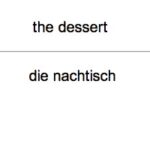Learning a new language can be daunting, and Welsh, with its unique sounds and grammar, might seem particularly challenging. This guide delves into the intricacies of the Welsh language, exploring its difficulties and offering insights for aspiring learners. Is Welsh hard to learn? Let’s find out.
Perspective on Language Difficulty
No language is truly beyond the grasp of a dedicated learner. However, some languages present more challenges than others, often depending on the learner’s native language and prior language learning experience. For English speakers, Welsh offers some advantages due to shared cultural context and some similarities in vocabulary derived from Latin roots.
Success in language learning hinges on consistent effort, effective learning methods, and ample practice opportunities. Motivation and a positive mindset are also crucial.
Welsh Pronunciation: Sounds and Challenges
Most Welsh sounds are familiar to English speakers. However, certain sounds require practice:
- “Ll”: A voiceless alveolar lateral fricative, produced by placing the tongue in the “l” position and hissing.
- “Rh”: A voiceless alveolar trill, similar to a Spanish “r” but with a stronger breath component.
- Rolled “r”: A trilled “r” as in Spanish.
Welsh also features nasal sounds like “ng,” which, unlike in English, can appear at the beginning of words. Vowel length (long or short) and diphthongs (combined vowels) also exist, mirroring patterns found in English. Stress in Welsh words typically falls on the penultimate syllable, simplifying pronunciation compared to languages with mobile stress patterns.
Decoding Welsh Spelling
Despite its seemingly complex appearance, Welsh spelling is remarkably consistent. Letters generally correspond to specific sounds, making it more predictable than English spelling. Key differences from English include:
- “W”: Represents the sound of “u” in English words like “cut.”
- “Y”: Typically a vowel sound similar to “i” in “bit” or “ee” in “beet.”
- “Ff”: Represents the sound of “f” in English, while “f” in Welsh sounds like “v.”
- Circumflex accent: Indicates a long vowel sound.
Sentence Structure: VSO vs. SVO
Welsh follows a Verb-Subject-Object (VSO) sentence structure, contrasting with English’s Subject-Verb-Object (SVO) order. This means the verb typically comes first in a Welsh sentence. For example, “Mae hi’n bwyta” translates to “Is she eating,” literally “Is she in eating.” Welsh also allows for flexible sentence structure to emphasize specific words or phrases. Adjectives generally follow nouns, as in French.
Welsh Verb System: Complexity and Simplicity
Welsh verbs have inflected forms, indicating tense and subject. While a full range of tenses exists, spoken Welsh primarily uses the imperfect, past, and future tenses. Welsh has only a few irregular verbs (bod – to be, mynd – to go, dod – to come, cael – to get/have, gwneud – to do), simplifying verb conjugation compared to languages with numerous irregular verbs. A simplified verb system using a form of “to be” plus the verb is common in spoken Welsh.
Welsh Vocabulary: Challenges and Aids
Welsh vocabulary differs significantly from English, with fewer cognates (shared words) than Germanic or Romance languages. However, Welsh often forms compound words logically using prefixes, aiding memorization. Loanwords from Latin and English also exist, providing familiar ground for learners. Moreover, the prevalence of English bilingualism in Wales allows learners to use English words when needed, and “Welshifying” English words (e.g., adding “-io” to create a verb) is a common practice.
Noun Gender and Pluralization
Welsh nouns have two genders: masculine and feminine. Unlike some languages, gender is not easily determined by the noun’s ending. Pluralization in Welsh is complex, with various endings and vowel changes depending on the noun. Learning the gender and plural form alongside the noun is recommended.
Idioms and Mutations
Welsh boasts a rich collection of idioms, both native and borrowed from English. Mutations, a characteristic of Celtic languages, involve changes to the initial consonant of a word depending on grammatical context. While initially challenging, mastering mutations is essential for fluency.
Case System, Yes/No, and Numbers
Welsh lacks a case system, simplifying grammar compared to languages like German or Russian. Welsh also lacks specific words for “yes” and “no,” instead echoing the verb in the question. Numbers in Welsh have both traditional (counting in twenties) and modern (decimal) forms.
Regional Variations and Formal vs. Informal Welsh
Regional variations exist in Welsh, primarily between North and South Wales. While these differences can cause initial confusion, choosing a specific regional dialect as a model is helpful. Formal written Welsh differs from the spoken language, utilizing more complex verb forms and grammatical structures. However, modern written Welsh often incorporates simplified forms, bridging the gap between spoken and written language.
Learning Resources and the Minority Language Factor
Numerous resources, including classes, books, and online courses, are available for learning Welsh. The “minority language” status of Welsh can present challenges in finding consistent practice opportunities. However, connecting with Welsh-speaking communities and utilizing available resources can overcome these obstacles.
Conclusion: Is Welsh Hard to Learn?
While Welsh presents unique challenges, it is a learnable language for dedicated individuals. Consistent effort, effective learning strategies, and immersion in the language are key to success. The rewards of learning Welsh, connecting with its rich culture and history, make the effort worthwhile.

